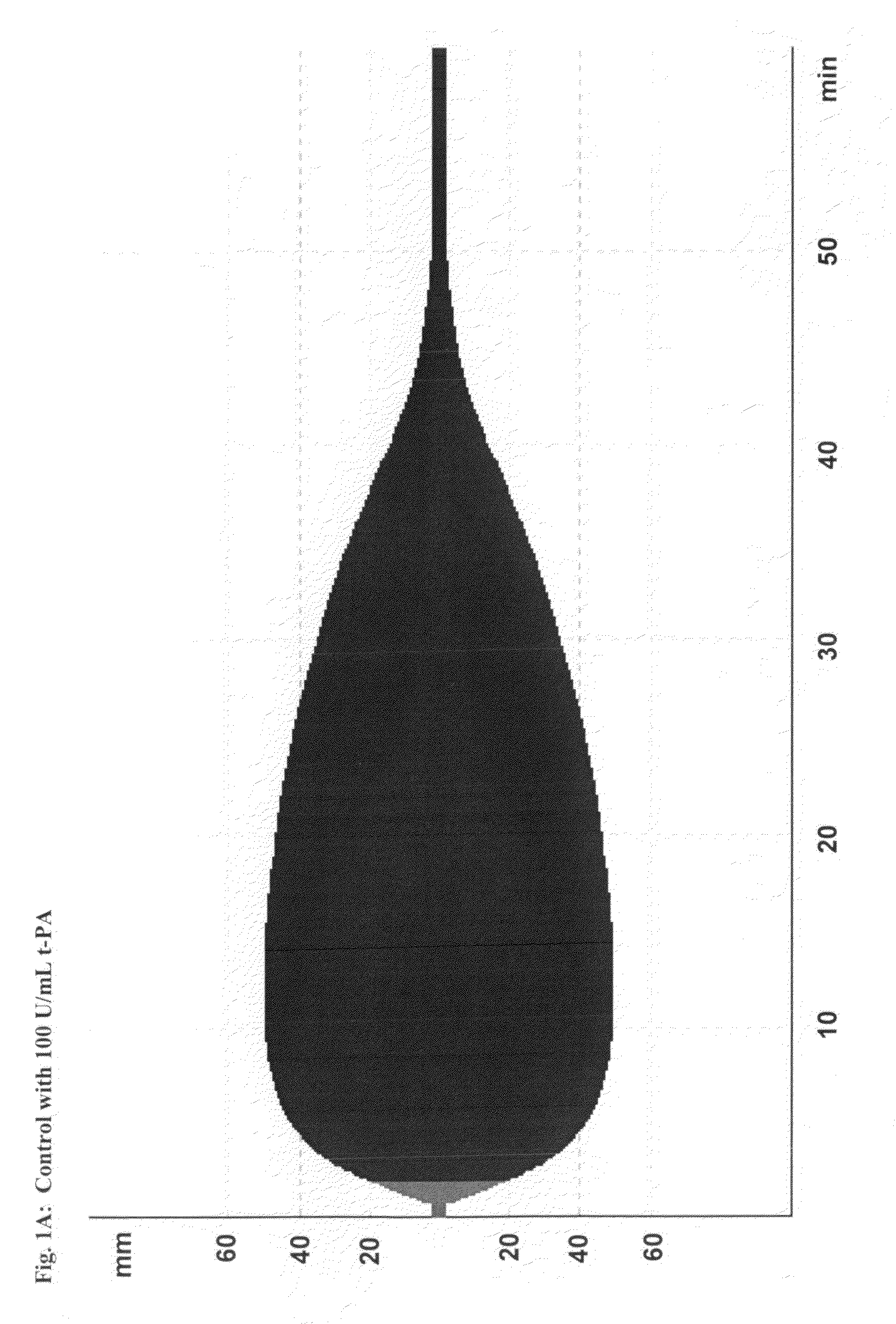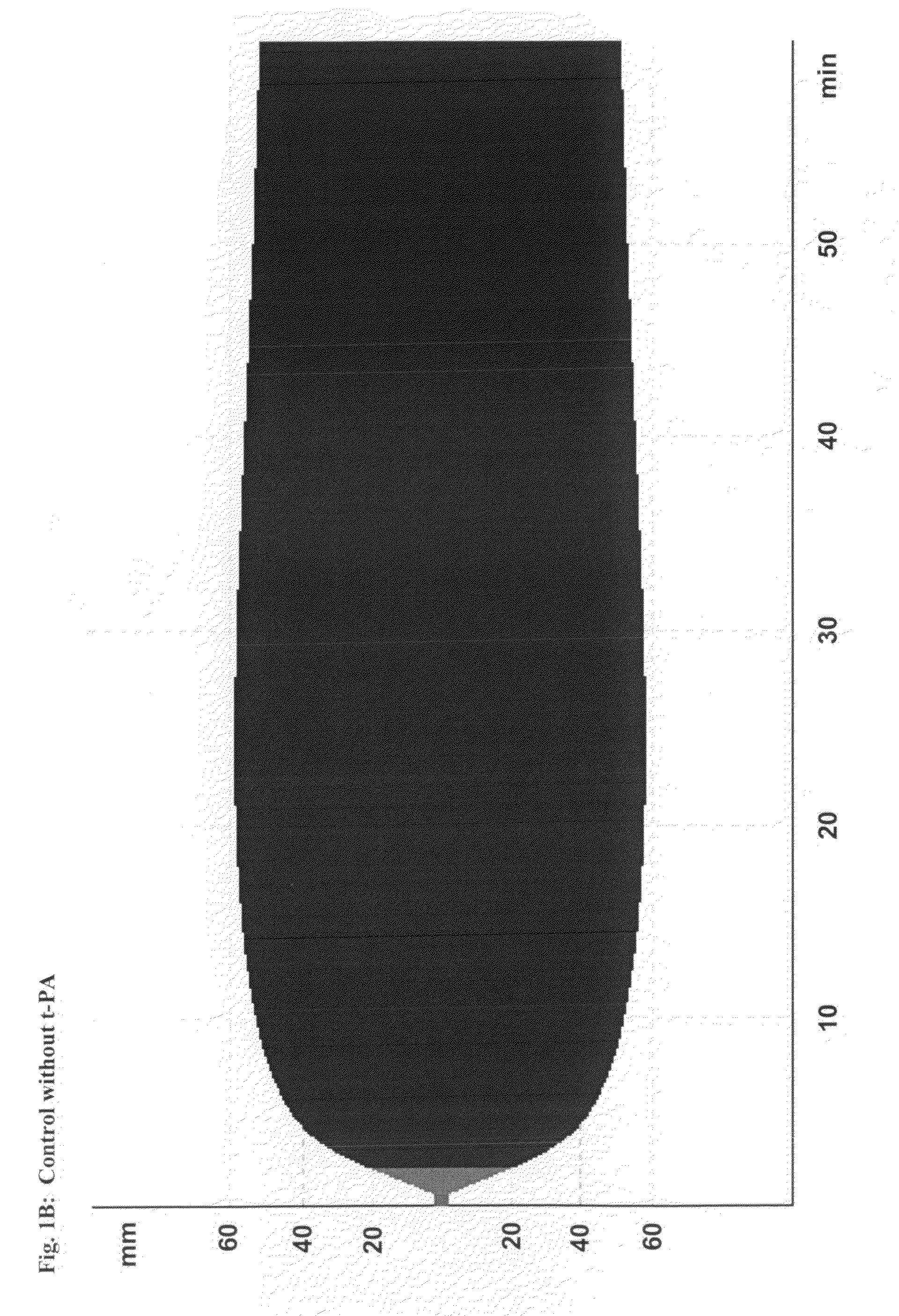Trypsin-like serine protease inhibitors, and their preparation and use
a serine protease inhibitor and trypsin-like technology, applied in the direction of drug compositions, peptides, extracellular fluid disorders, etc., can solve the problems of inability to inhibit plasmin, risk of pathogenic contamination, serious impairment of hemostasis, etc., and achieve good effects
- Summary
- Abstract
- Description
- Claims
- Application Information
AI Technical Summary
Benefits of technology
Problems solved by technology
Method used
Image
Examples
examples
1. Analytical Methods
1.1 Analytical HPLC
[0113]A Shimadzu LC-10A HPLC system consisting of the subsystems CTO-10AS column oven, LC-10AD pumps (2×), DGU-14A degaser, SIL-10AD autoinjector, SCL-10A system controller, SPD-10A UV-Vis detector and a Phenomenex Luna 5 μm C18(2) 100 Å, 250×4.6 mm column, was used for the analytical reversed-phase HPLC, utilizing the relevant Shimadzu CLASS-VP software, Version 5.3. Detection took place at 220 nm. Water with 0.1% TFA (A) and acetonitrile with 0.1% TFA (B) served as eluents at a flow rate of 1 ml / min and a linear gradient (1% B / min). Different starting conditions were used for the analytical HPLC depending on the compound, which are indicated for the corresponding compounds.
[0114]A Phenomenex Jupiter 5 μm C18(2) 300 Å, 250×4.6 mm column was used for analyzing all the polyethylene glycol-modified active substances.
1.2 Preparative HPLC
[0115]A Shimadzu HPLC system consisting of the subsystems LC-8A preparative pumps (2×), DGU-14A degaser, FRC-10...
examples 4a-c
Discussion of Examples 4A-C
[0216]This study demonstrates the efficacy and potency in vitro of the synthetic, small molecule direct serine protease inhibitor Compound No. 3. The findings are summarized as follows: First, Compound No. 3 and aprotinin have almost similar nanomolar potency (2.3 vs. 4.2 nM) regarding inhibition of plasmin enzymatic activity. Second, consistent with Ki data, Compound No. 3 and aprotinin display similar nanomolar potencies at inhibiting clot lysis in whole blood (IC50 of 150 vs. 345 nM) and plasma (IC50 of 315 vs. 327 nM), both drugs being ˜10-fold more potent than tranexamic acid. Third, Compound No. 3 and aprotinin, but not tranexamic acid, display anticoagulant properties, with Compound No. 3 being more potent than aprotinin as assessed by ROTEM®, global plasma coagulation tests, and inhibition of thrombin generation. Thus, Compound No. 3 is an inhibitor of fibrinolysis that is at least equivalent to aprotinin and more potent compared to tranexamic acid...
PUM
| Property | Measurement | Unit |
|---|---|---|
| structure | aaaaa | aaaaa |
| basic | aaaaa | aaaaa |
| adhesive | aaaaa | aaaaa |
Abstract
Description
Claims
Application Information
 Login to View More
Login to View More - R&D
- Intellectual Property
- Life Sciences
- Materials
- Tech Scout
- Unparalleled Data Quality
- Higher Quality Content
- 60% Fewer Hallucinations
Browse by: Latest US Patents, China's latest patents, Technical Efficacy Thesaurus, Application Domain, Technology Topic, Popular Technical Reports.
© 2025 PatSnap. All rights reserved.Legal|Privacy policy|Modern Slavery Act Transparency Statement|Sitemap|About US| Contact US: help@patsnap.com



